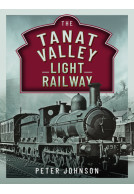British Railways Diesel Electric Classes 44 to 46 (ePub)
The Mighty Peaks of the Midland Main Line
Imprint: Pen & Sword Transport
File Size: 52.9 MB (.epub)
ISBN: 9781399089951
Published: 30th November 2022
| Other formats available - Buy the Hardback and get the eBook for £1.99! | Price |
|---|---|
| British Railways Diesel Electric… Hardback Add to Basket | £25.00 |
Derby Works introduced the first mainline Diesel to UK service with the production of LMS 10000 in 1947, although mainline diesels had previously been tested on post-Grouping main lines prior to being exported. When British Railways' Modernisation Plan of 1955 was initiated by a Pilot Scheme to identify the best features for a future standard diesel fleet, Derby Works upgraded the design to produce its Type 4 - later Class 44 - locomotive that ultimately spawned 193 locomotives encompassing 3 variants which powered trains throughout the UK network.
Fred Kerr lived close to the Midland Main Line in Northamptonshire and observed the class from their introduction in May 1959 to their final withdrawal in the 1980s and has amassed a collection of images showing them working both freight and passenger duties throughout the UK but particularly on the Midland Main Line where the Class 45 variant held sway for nearly 25 years.
This album contains images from his extensive collection and, supported by a brief text, reflects the history of the 3 variants by showing the variety of services which they powered and the wide range of locations where class members were to be found.
There are no reviews for this book. Register or Login now and you can be the first to post a review!
About Fred Kerr
Fred Kerr is a photographer whose lifelong interest in railways began in Edinburgh during the early 1950s and has continued throughout his life since. His family move to Northamptonshire in 1956 introduced him to the Midland Main Line where the transition from steam to diesel traction became important as Derby Works reflected the change with new locomotives being tested and introduced to service. His early ventures into photography began in 1961 but became established during his University years in the early 1970s. Taking early retirement in 1994 he has spent time working for Colin Garratt, a muse whose inspiration provided opportunities to photograph railway scenes that have proved to be historic as the railway undergoes changes in both its structures and operations.





















